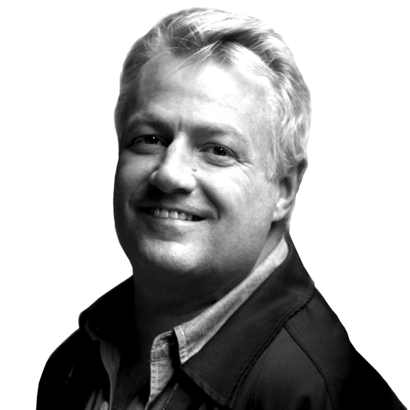In France, almost 50 years after Bonne Maman was founded in the tiny town of Biars-sur-Cère, in 1971, its jaunty jars of preserves, with their signature red-and-white gingham lids and white labels with black cursive writing have become as much an indelible icon of Gaul as mold-flocked white rounds of Camembert cheese in round wooden boxes, or the late president Charles de Gaulle’s beaky nose. This is because Bonne Maman broke the mold of commercially made jam in France. (Meanwhile, in the U.S., toast-lovers are outraged by reports that the vats at Sqirl, one of the country’s most lauded artisanal-jam producers, were often covered in a thick layer of mold.)
The Grandeur of Gallic Abundance
Bonne Maman’s success is not only explained by the fact that the French love preserves as part of their beloved breakfast trinity, where it is served with bread and butter. (Preserves are made of whole fruit, while jam is made from crushed.) The condiment’s psychic connotations strum many of those chords of self-regard the French like best about themselves, including their cult of connoisseurship in the details of daily life, a heritage of wily ancestral peasant thrift (the shrewdness of using sugar to transform perishable fruit into a long-life preserve, even if it was actually the Arabs who introduced cane sugar and jam-like fruit pastes to Europe during the Middle Ages), and the grandeur of Gallic abundance—the varied geography of France means it produces high-quality harvests of every fruit grown in temperate and Mediterranean climates.
Preserves and jam also have sepia-toned resonances of the country’s rural roots, conjuring up images of the farms and villages where most of the French lived a century ago and some still spend their vacations today—those peaceful green hamlets where kindly grandmothers, the real bonnes mamans, still fuss over a seasonally evolving cycle of fruit simmering in copper jam pans to keep the pantry stocked.

This is the “homemade” story line Bonne Maman’s co-founders, Frédéric Gervoson and Pierre Roche-Bayard, have perpetuated with a tuning-fork precision ever since they launched the brand, which gave birth to one of the biggest food companies in France. In the beginning, their mythmaking had a basis in fact, since it was Jean Gervoson, Frédéric’s father, who founded the business when he and his friend Pierre Chapoulart began buying the unsold plums of his father-in-law, a fruit wholesaler in southwestern France, to make preserves. The jar’s emblematic lid is also said to have been inspired by the checked fabric of the curtains in Roche-Bayard’s farmhouse. The black script on the white label, which recalls a perfect-penmanship exercise at a pre-laptop French primary school, was his idea, too.
The condiment’s psychic connotations strum many of those chords of self-regard the French like best about themselves.
Bonne Maman debuted just as a shopping-center-construction boom in France during the 70s was adding miles of new supermarket shelves to be filled, and many French women were going to work full-time. The brand was an immediate hit. Even with stiff competition from private labels today, it remains the best-selling brand of preserves in France, claiming 35 percent of the market. It’s also No. 1 in the Netherlands and Greece, and No. 2 in the United Kingdom and the United States.
Today, Bonne Maman produces 23 different preserves, including France’s three favorites—apricot, strawberry, and orange marmalade. Blackberry, cassis (black currant), fig, prune, mirabelle, quince, raspberry, Reine Claude, rhubarb, and green tomato are among the other best-sellers in a country where the average Gaul consumes almost nine pounds of confiture a year, and at least 70 percent of the population buy it annually. (Sixty percent of the French still make jam at home, too.) As the world’s largest jam exporter, France sent more than $400 million worth of jars and packets of sweet-spreadable-fruit unguents overseas last year.
Victory Is Sweet
So seriously do the French take jam and jam-making that, last January, one of the recipients of the Légion d’Honneur, France’s highest civilian honor, was the cult confiturière Christine Ferber, who lives and works in the tiny Alsatian village of Niedermorschwihr, where she hand-fills all of the 200,000 pots of jam she makes every year. Ferber’s jams use less sugar than others, and she creates some brilliant original flavors, including my favorite, Alsatian rhubarb with elderflower, and Saint Nicolas, which is Christmas in a jar as a blend of quince, orange, and lemon with spices.

Bonne Maman was so successful that it launched a conglomerate named Andros, which produces fresh fruit juice, fruit purée, yogurt, cookies, pastries, and other products under a variety of different brand names and supplies private-label jam to Carrefour, France’s second-largest supermarket chain. Andros’s revenues were estimated at $2.4 billion in 2019, and it remains wholly owned by the very private Gervoson family, one of the 100 richest in France. Andros owns and operates more than 30 factories worldwide, including a fruit-processing factory in Mount Jackson, Virginia.
One of the recipients of the Légion d’Honneur, France’s highest civilian honor, was the cult confiturière Christine Ferber.
There’s no doubt that the innocence of hearth and home is an eternally seductive marketing meme, especially when it delivers the carnal thrill of something that tastes good. But there’s a certain irony in Andros’s continued insistence on the folklore of a grandmother preparing small batches of jam as the visual identity of Bonne Maman products. It precludes showcasing the much more impressive reality of what their jams really prove, which is that even when produced on an industrial scale, preserves can be wholesome and, frankly, delicious. How do they do it? Bonne Maman eschews the high-fructose corn syrup and frozen fruit used by many big American jam-makers in favor of real sugar and non–genetically modified fresh fruit. So it’s exceptional quality at an accessible price that explains the high-kicking cancan of this jamming French granny.
Alexander Lobrano is a writer and restaurant critic. The second edition of his Hungry for Paris: The Ultimate Guide to the City’s 109 Best Restaurants is out now


